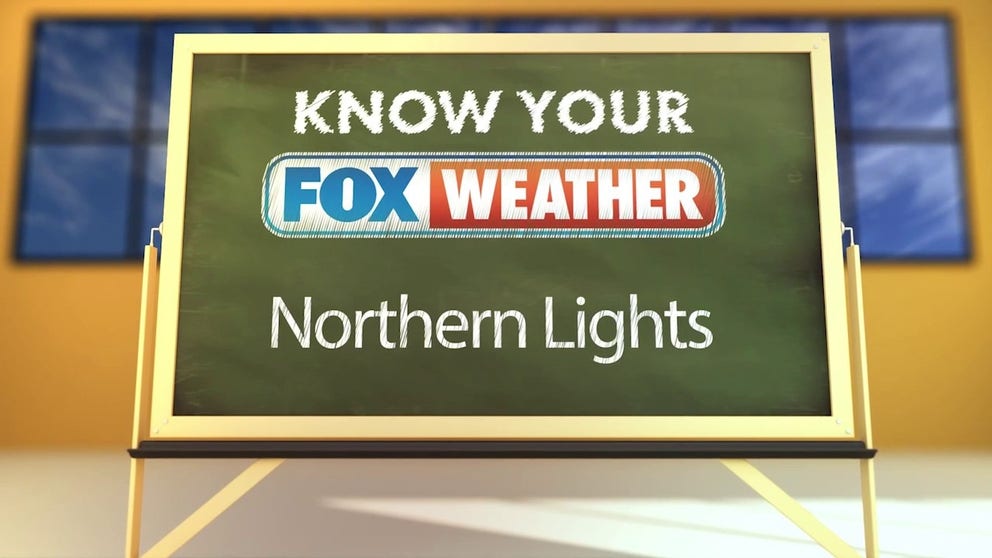Weekend geomagnetic storm had potential to trigger Northern Lights
With good weather conditions, the Northern Lights could have been seen as low as New York to Wisconsin to Washington state. So far, there have been no reports of seeing the Northern Lights in those locations at the end of the weekend.
Know Your FOX Weather: Northern Lights
FOX Weather meteorologist Stephen Morgan breaks down the Northern Lights and how you can see them.
Displays of Northern lights were possible on Sunday night across the Northern U.S. due to a geomagnetic storm.
NOAA's Space Weather Prediction Center issued a Geomagnetic Storm Warning for Sunday because of a coronal hole high-speed stream, or CH HSS from the Sun. The SWPC said geomagnetic storming is likely to continue as the influence of fast solar wind associated with the CH HSS continues.
The SWPC rates solar storms on a five-level scale, with five being the most extreme and rarest space weather conditions. Moderate, Level 2 out of 5, geomagnetic storming was possible throughout Sunday.
7 THINGS TO KNOW ABOUT THE NORTHERN LIGHTS
The most well-known effects of geomagnetism storms are the Northern Lights or the Aurora Borealis. As charged particles interact with oxygen and nitrogen in the atmosphere, they briefly energize the molecule, giving off light as it de-energizes, creating vivid and colorful displays of lights around Earth's poles.
With good weather conditions, the Northern Lights could have been seen as low as New York to Wisconsin to Washington state. So far, there have been no reports of seeing the Northern Lights in those locations at the end of the weekend.
Cloud cover across the Northeast, associated with beneficial rain for the region, might have blocked the view of the Northern lights, but those across the Great Lakes and Northern Plains saw less cloud cover.

Sunday night Northern lights forecast.
(FOX Weather)
What is a coronal hole?
Unlike coronal mass ejection, which can take between one and three days to reach Earth's atmosphere, coronal holes can have delayed impacts.
A coronal hole looks like a vast area of blackness in the Sun because coronal holes don't have plasma. The plasma is missing because it travels out into space, streaming along the Sun's magnetic field lines.
WHAT IS THE 11-YEAR SOLAR CYCLE?
A CH HSS can sometimes have lasting impacts because the Sun spins every 27 days. If Earth gets hit by a high-speed stream, there's a chance it could strike again in 27 days.
The latest geomagnetic storms and associated Aurora activity occurred weeks after NOAA and NASA declared the Sun reached its solar maximum in Solar Cycle 25. However, space weather experts say the increased solar activity will stay elevated into 2025.
